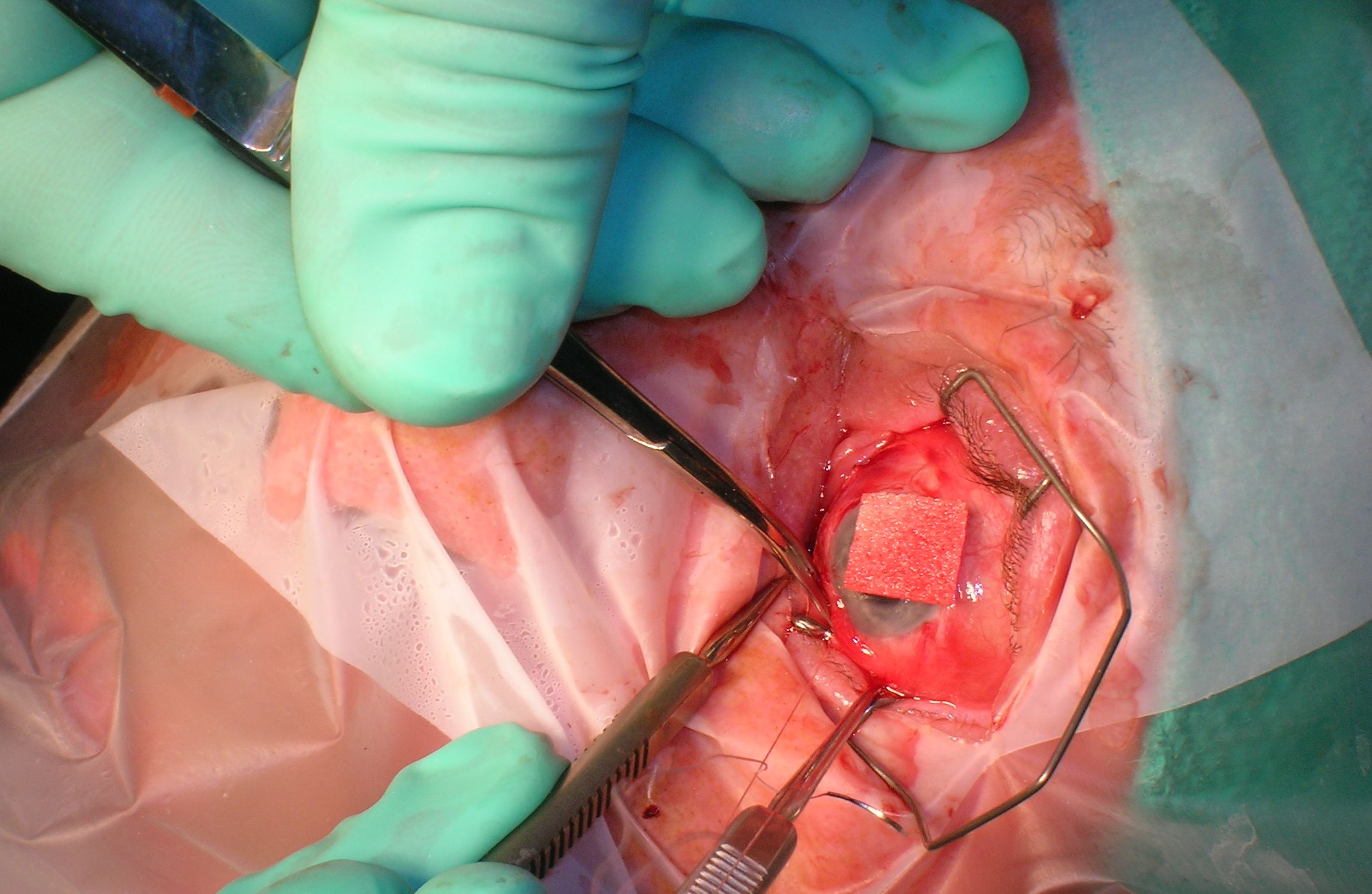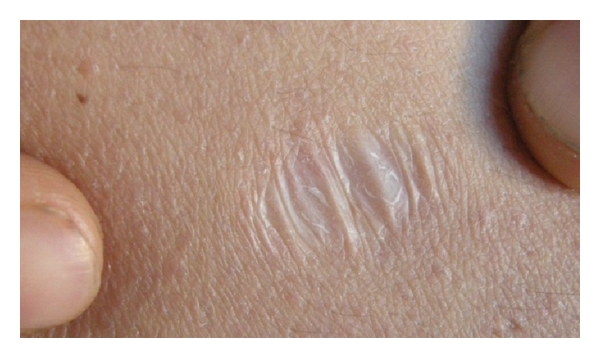|
Arlt's Line
Arlt's line is a thick band of scar tissue in the conjunctiva of the eye, near the lid margin, that is associated with eye infections. Arlt's line is a characteristic finding of trachoma, an infection of the eye caused by ''Chlamydia trachomatis''. The line runs horizontally, parallel to eyelid, and is found at the junction of the anterior one third and posterior two thirds of the conjunctiva. The line is named after the Austrian ophthalmologist Ophthalmology (, ) is the branch of medicine that deals with the diagnosis, treatment, and surgery of eye diseases and disorders. An ophthalmologist is a physician who undergoes subspecialty training in medical and surgical eye care. Following a ... Carl Ferdinand von Arlt. References {{med-sign-stub Eye diseases Medical signs Ophthalmology ... [...More Info...] [...Related Items...] OR: [Wikipedia] [Google] [Baidu] |
Ophthalmology
Ophthalmology (, ) is the branch of medicine that deals with the diagnosis, treatment, and surgery of eye diseases and disorders. An ophthalmologist is a physician who undergoes subspecialty training in medical and surgical eye care. Following a medical degree, a doctor specialising in ophthalmology must pursue additional postgraduate residency training specific to that field. In the United States, following graduation from medical school, one must complete a four-year residency in ophthalmology to become an ophthalmologist. Following residency, additional specialty training (or fellowship) may be sought in a particular aspect of eye pathology. Ophthalmologists prescribe medications to treat ailments, such as eye diseases, implement laser therapy, and perform surgery when needed. Ophthalmologists provide both primary and specialty eye care—medical and surgical. Most ophthalmologists participate in academic research on eye diseases at some point in their training and many inc ... [...More Info...] [...Related Items...] OR: [Wikipedia] [Google] [Baidu] |
Chlamydia Trachomatis
''Chlamydia trachomatis'' () is a Gram-negative, Anaerobic organism, anaerobic bacterium responsible for Chlamydia infection, chlamydia and trachoma. ''C. trachomatis'' exists in two forms, an extracellular infectious elementary body (EB) and an intracellular non-infectious reticulate body (RB). The EB attaches to host cells and enter the cell using Effector (biology), effector proteins, where it transforms into the metabolically active RB. Inside the cell, RBs rapidly replicate before transitioning back to EBs, which are then released to infect new host cells. The earliest description of ''C. trachomatis'' was in 1907 by Stanislaus von Prowazek and Ludwig Halberstädter as a protozoan. It was later thought to be a virus due to its small size and inability to grow in laboratories. It was not until 1966 when it was discovered as a bacterium by Electron microscope, electron microscopy after its internal structures were visually observed. There are currently 18 Serotype, serovars of ... [...More Info...] [...Related Items...] OR: [Wikipedia] [Google] [Baidu] |
Trachoma
Trachoma is an infectious disease caused by bacterium '' Chlamydia trachomatis''. The infection causes a roughening of the inner surface of the eyelids. This roughening can lead to pain in the eyes, breakdown of the outer surface or cornea of the eyes, and eventual blindness. Untreated, repeated trachoma infections can result in a form of permanent blindness when the eyelids turn inward. The bacteria that cause the disease can be spread by both direct and indirect contact with an affected person's eyes or nose. Indirect contact includes through clothing or flies that have come into contact with an affected person's eyes or nose. Children spread the disease more often than adults. Poor sanitation, crowded living conditions, and insufficient clean water and toilets also increase spread. Efforts to prevent the disease include improving access to clean water and treatment with antibiotics to decrease the number of people infected with the bacterium. This may include treatin ... [...More Info...] [...Related Items...] OR: [Wikipedia] [Google] [Baidu] |
Scar
A scar (or scar tissue) is an area of fibrosis, fibrous tissue that replaces normal skin after an injury. Scars result from the biological process of wound repair in the skin, as well as in other Organ (anatomy), organs, and biological tissue, tissues of the body. Thus, scarring is a natural part of the healing process. With the exception of very minor lesions, every wound (e.g., after accident, disease, or surgery) results in some degree of scarring. An exception to this are animals with complete Regeneration (biology), regeneration, which regrow tissue without scar formation. Scar tissue is composed of the same protein (collagen) as the tissue that it replaces, but the fiber composition of the protein is different; instead of a random basketweave formation of the collagen fibers found in normal tissue, in fibrosis the collagen cross-links and forms a pronounced alignment in a single direction. This collagen scar tissue alignment is usually of inferior functional quality to the ... [...More Info...] [...Related Items...] OR: [Wikipedia] [Google] [Baidu] |
Conjunctiva
In the anatomy of the eye, the conjunctiva (: conjunctivae) is a thin mucous membrane that lines the inside of the eyelids and covers the sclera (the white of the eye). It is composed of non-keratinized, stratified squamous epithelium with goblet cells, stratified columnar epithelium and stratified cuboidal epithelium (depending on the zone). The conjunctiva is highly Angiogenesis, vascularised, with many microvessels easily accessible for imaging studies. Structure The conjunctiva is typically divided into three parts: Blood supply Blood to the bulbar conjunctiva is primarily derived from the ophthalmic artery. The blood supply to the palpebral conjunctiva (the eyelid) is derived from the external carotid artery. However, the circulations of the bulbar conjunctiva and palpebral conjunctiva are linked, so both bulbar conjunctival and palpebral conjunctival vessels are supplied by both the ophthalmic artery and the external carotid artery, to varying extents. Nerve supply Se ... [...More Info...] [...Related Items...] OR: [Wikipedia] [Google] [Baidu] |
Human Eye
The human eye is a sensory organ in the visual system that reacts to light, visible light allowing eyesight. Other functions include maintaining the circadian rhythm, and Balance (ability), keeping balance. The eye can be considered as a living optics, optical device. It is approximately spherical in shape, with its outer layers, such as the outermost, white part of the eye (the sclera) and one of its inner layers (the pigmented choroid) keeping the eye essentially stray light, light tight except on the eye's optic axis. In order, along the optic axis, the optical components consist of a first lens (the cornea, cornea—the clear part of the eye) that accounts for most of the optical power of the eye and accomplishes most of the Focus (optics), focusing of light from the outside world; then an aperture (the pupil) in a Diaphragm (optics), diaphragm (the Iris (anatomy), iris—the coloured part of the eye) that controls the amount of light entering the interior of the eye; then an ... [...More Info...] [...Related Items...] OR: [Wikipedia] [Google] [Baidu] |
Trachoma
Trachoma is an infectious disease caused by bacterium '' Chlamydia trachomatis''. The infection causes a roughening of the inner surface of the eyelids. This roughening can lead to pain in the eyes, breakdown of the outer surface or cornea of the eyes, and eventual blindness. Untreated, repeated trachoma infections can result in a form of permanent blindness when the eyelids turn inward. The bacteria that cause the disease can be spread by both direct and indirect contact with an affected person's eyes or nose. Indirect contact includes through clothing or flies that have come into contact with an affected person's eyes or nose. Children spread the disease more often than adults. Poor sanitation, crowded living conditions, and insufficient clean water and toilets also increase spread. Efforts to prevent the disease include improving access to clean water and treatment with antibiotics to decrease the number of people infected with the bacterium. This may include treatin ... [...More Info...] [...Related Items...] OR: [Wikipedia] [Google] [Baidu] |
Austrian Empire
The Austrian Empire, officially known as the Empire of Austria, was a Multinational state, multinational European Great Powers, great power from 1804 to 1867, created by proclamation out of the Habsburg monarchy, realms of the Habsburgs. During its existence, it was the third most populous monarchy in Europe after the Russian Empire and the United Kingdom of Great Britain and Ireland, United Kingdom, while geographically, it was the third-largest empire in Europe after the Russian Empire and the First French Empire. The empire was proclaimed by Francis II, Holy Roman Emperor, Francis II in 1804 in response to Napoleon's declaration of the First French Empire, unifying all Habsburg monarchy, Habsburg possessions under one central government. It remained part of the Holy Roman Empire until the latter's dissolution in 1806. It continued fighting against Napoleon throughout the Napoleonic Wars, except for a period between 1809 and 1813, when Austria was first allied with Napoleon ... [...More Info...] [...Related Items...] OR: [Wikipedia] [Google] [Baidu] |
Ophthalmologist
Ophthalmology (, ) is the branch of medicine that deals with the diagnosis, treatment, and surgery of eye diseases and disorders. An ophthalmologist is a physician who undergoes subspecialty training in medical and surgical eye care. Following a medical degree, a doctor specialising in ophthalmology must pursue additional postgraduate residency training specific to that field. In the United States, following graduation from medical school, one must complete a four-year residency in ophthalmology to become an ophthalmologist. Following residency, additional specialty training (or fellowship) may be sought in a particular aspect of eye pathology. Ophthalmologists prescribe medications to treat ailments, such as eye diseases, implement laser therapy, and perform surgery when needed. Ophthalmologists provide both primary and specialty eye care—medical and surgical. Most ophthalmologists participate in academic research on eye diseases at some point in their training and many incl ... [...More Info...] [...Related Items...] OR: [Wikipedia] [Google] [Baidu] |
Carl Ferdinand Von Arlt
Carl Ferdinand Ritter von Arlt (18 April 1812 – 7 March 1887) was an Austrian ophthalmologist born in Ober-Graupen, a village near Teplitz (Teplice) in Bohemia. He earned his doctorate in Prague in 1839, and later became a professor of ophthalmology in Prague (1849–1856) and Vienna (1856–1883). His son Ferdinand Ritter von Arlt (1842–1917) was also an ophthalmologist. Arlt published a prodigious number of books and articles concerning diseases of the eye, and collaborated with Albrecht von Graefe and Franciscus Donders on the journal ''Archiv für Ophthalmologie''. He was the first physician to provide proof that myopia (short-sightedness) is generally a consequence of excessive length of the sagittal axis of the eye (bulbus). Annually. he returned to his home town in order to treat people in its vicinity who were afflicted with eye diseases. Arlt died in Vienna on 7 March 1887. The following eponyms are named after Arlt: * "Arlt's line": Linear scar present in sulc ... [...More Info...] [...Related Items...] OR: [Wikipedia] [Google] [Baidu] |
Eye Diseases
This is a partial list of human eye diseases and disorders. The World Health Organization (WHO) publishes a classification of known diseases and injuries, the International Statistical Classification of Diseases and Related Health Problems, or ICD-10. This list uses that classification. H00-H06 Disorders of eyelid, lacrimal system and orbit * (H02.1) Ectropion * (H02.2) Lagophthalmos * (H02.3) Blepharochalasis * (H02.4) Ptosis (eyelid), Ptosis * (H02.5) Stye, an acne type infection of the sebaceous glands on or near the eyelid. * (H02.6) Xanthelasma of eyelid * (H03.0*) Parasitic infestation of eyelid in diseases classified elsewhere ** Dermatitis of eyelid due to Demodex species ( B88.0+ ) ** Parasitic infestation of eyelid in: *** leishmaniasis ( B55.-+ ) *** loiasis ( B74.3+ ) *** onchocerciasis ( B73+ ) *** phthiriasis ( B85.3+ ) * (H03.1*) Involvement of eyelid in other infectious diseases classified elsewhere ** Involvement of eyelid in: *** herpesviral (herpes simplex) ... [...More Info...] [...Related Items...] OR: [Wikipedia] [Google] [Baidu] |
Medical Signs
Signs and symptoms are diagnostic indications of an illness, injury, or condition. Signs are objective and externally observable; symptoms are a person's reported subjective experiences. A sign for example may be a higher or lower temperature than normal, raised or lowered blood pressure or an abnormality showing on a medical scan. A symptom is something out of the ordinary that is experienced by an individual such as feeling feverish, a headache or other pains in the body, which occur as the body's immune system fights off an infection. Signs and symptoms Signs A medical sign is an objective observable indication of a disease, injury, or medical condition that may be detected during a physical examination. These signs may be visible, such as a rash or bruise, or otherwise detectable such as by using a stethoscope or taking blood pressure. Medical signs, along with symptoms, help in forming a diagnosis. Some examples of signs are nail clubbing of either the fingernails or t ... [...More Info...] [...Related Items...] OR: [Wikipedia] [Google] [Baidu] |



